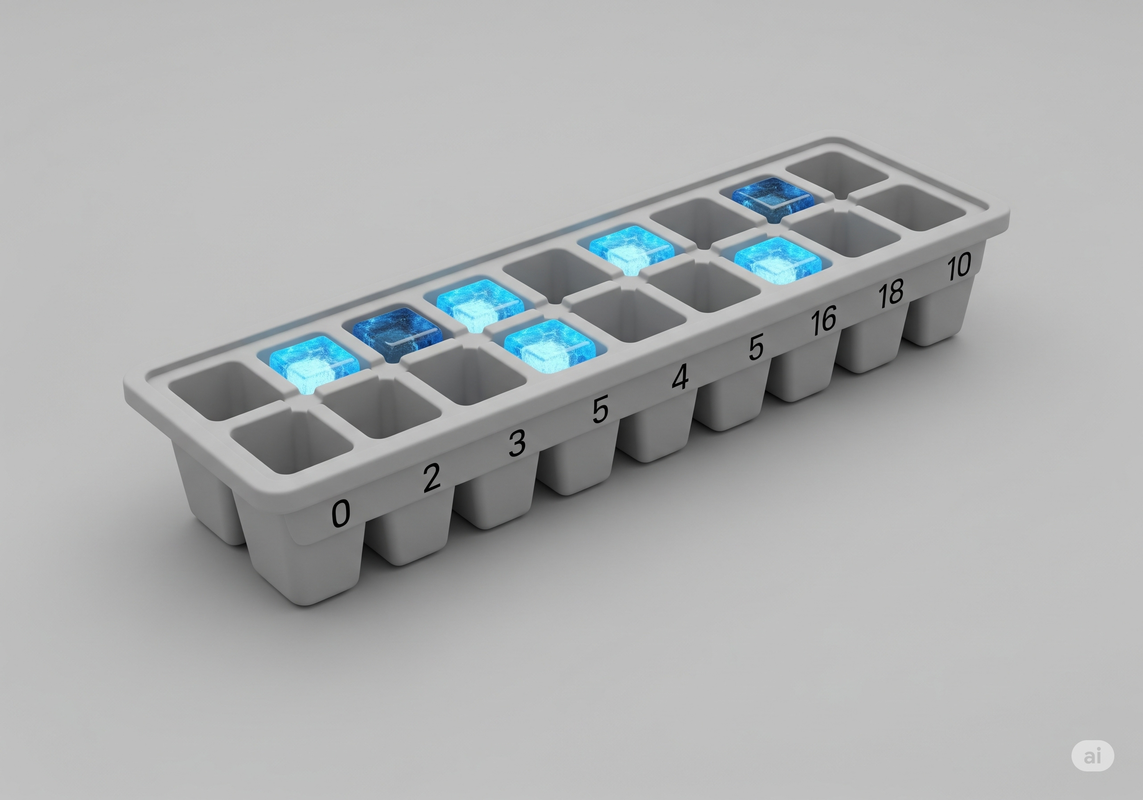Blueprint 1: "Constructing the Data Crystal" 🧊
1. The Story: The Mission Briefing
"Welcome, Architect. Before we can organize the Labyrinth's data, we must understand the primary storage medium: the Data Crystal. It's the most basic and efficient way to store a sequence of information. Your mission is to understand its structure. Pay close attention."
2. The Analogy: The Ice Tray
An Array is like a perfectly organized ice cube tray. It's a single, solid block with a set number of compartments, all lined up in a neat row. Each compartment is exactly the same size, designed to hold one "cube" of data.
Crucially, each compartment has a unique address, called an index. Just like house numbers on a street, these indices start at 0 and go up by one. If you know a cube's index, you don't need to search for it—you can go directly to its location.

3. The Logic: How Computers See Arrays
This is the secret to an array's speed. In the computer's memory, an array isn't just a list; it's a single, unbroken block of space. Think of it like a row of connected parking spots. When you create an array, the computer finds a continuous stretch of memory large enough to hold all its elements side-by-side.
Array in Memory
- Address 1000: Element 0
- Address 1004: Element 1
- Address 1008: Element 2
- Address 1012: Element 3
The Math of Access
To find array[2]:
1000 + (2 * 4) = 1008
(Base Address + (Index * Size of Element))
The computer remembers the memory address of the very first spot (the "base address," e.g., 1000). To access an element at a given index, it performs a simple calculation:
Address of element[i] = Base Address + ( i * size_of_one_element )
Why is the size 4?
In our diagram, we assume each element is a standard integer. In many programming languages like C++ or Java, a standard integer is represented using 32 bits of data. There are 8 bits in a byte, so 32 bits is equal to 4 bytes. Memory addresses are typically counted in bytes. That's why the address jumps by 4 each time (1000, 1004, 1008...). This consistent, predictable size is what allows the computer to perform the simple multiplication to find any element instantly. This is the essence of O(1) Constant Time access.
4. Concepts Unlocked
Architect's Log: Entry 1
- ✓ Arrays: The core sequential data container.
- ✓ Index: The unique address of an element.
- ✓ Contiguous Memory: The "side-by-side" storage that makes arrays fast.
- ✓ O(1) Access: The ability to retrieve any element instantly if its index is known.